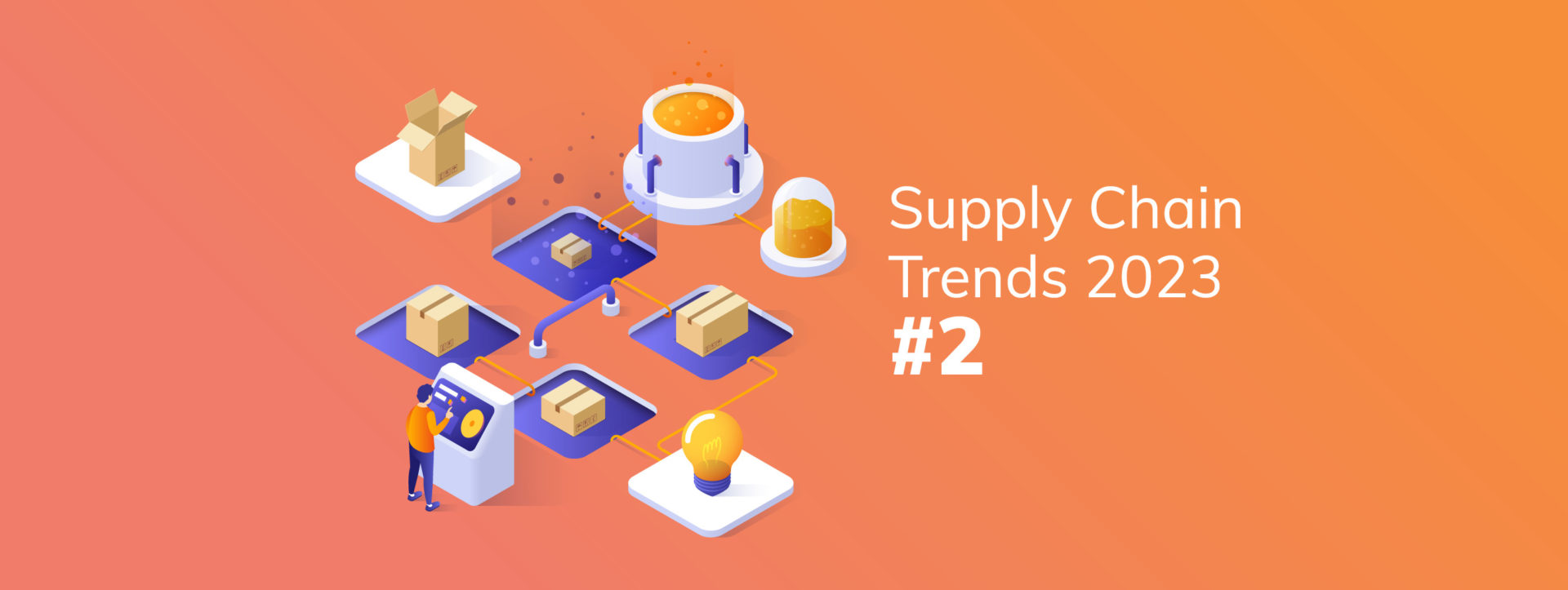
Advancing beyond S&OP: Is IBP the right approach for you?
As businesses mature and markets fluctuate, the need for adaptable planning processes increases. Transitioning from…

At the advent of a new year, it is a good idea to not only take stock of what has happened but also look ahead and consider how things will likely pan out. In a new, supply chain-focused blog series, we will do this by exploring the key supply chain trends we will see in 2023.
This article, the second in the series, explores the importance of supply chain visibility and how it ties into the adaptability of an end-to-end supply chain process.
Intelligent supply chain planning is a process that helps businesses gain visibility into their supply chain operations and make data-driven decisions. It enables businesses to plan for disruptions, manage inventory levels, and optimize the supply chain in real-time. With intelligent planning, companies can achieve granularity in their supply chain operations and deal with disruptions more effectively.
Industries are finding current supply chain models no longer match the accelerated expectations transforming the world. Businesses need visibility into their supply chain operations to identify potential risks, plan for disruptions, and take corrective actions quickly. This helps them stay ahead of the competition and manage disruption better.
Supply chain leaders are looking at edge technology to support organizational challenges. By producing and reviewing alternative scenarios, leaders can evaluate how to respond to other significant events and understand likely impacts on their supply chain and business operations by modeling and contrasting possible methods. However, the more ‘real-time’ the data input is, the more reliable the integration and the more transparent the supply chain needs to be.
End-to-end visibility in the supply chain planning process leads to a digital depiction of the supply chain. It demonstrates how resources and materials can be synchronized from a single view. The objective can be to have visibility into the whole supply chain, ensuring that gaps and disconnects are highlighted and responded to as the mix, mode, and momentum change.
Supply chain leaders can make more frequent updates and increase the variety of data through accelerating data and transport telematics. These data-rich resources transform what and how organizations can improve planning, profitability, and resilience. Supply Chain visibility agents are looking to generate huge value from these data stores by blending them into a massive pool of highly granulated and improved data; it allows organizations to plan the whole supply chain rather than a group of siloed-business divisions.
Companies need intelligent tools and software solutions to enhance and improve visibility. Supply chains are multidimensional, covering many roles, localities, and circumstances. The wide diversity of technology tools and software solutions enhances and extends the capability to fill specific gaps in business thinking.
A supply chain planning tool typically enables effective planning decisions by taking inputs from various systems of record, such as Enterprise Resource Planning (ERP) and Transportation, Warehouse, and Yard (TW&Y) Management systems to enable effective supply chain decisions within the company. Today’s intelligent planning platforms can take all this data and more to extend and expand the reach and response to enable prediction and facilitate through automated processes and real-time checks and balances. Trends will be towards executives looking for cloud-based intelligent planning solutions that enable adaptability and responsiveness through improved visibility.
Visibility is an indispensable element in dealing with difficulties. When you try to watch the entire ecosystem, you often have difficulty discerning the important from the urgent. Intelligent planning with improved visibility will empower supply chain planners to automate the mundane and enhance planning adaptability and responsiveness.
Supply chain visibility enables dialogue across the end-to-end supply chain. Companies can discover what is happening or how and where to improve it. By deploying digital technologies, companies expect to generate a vital paradigm shift to drive adaptable supply chains and deliver an enhanced planning environment that highlights timing gaps and overlaps critical dependencies, and allows for maximizing customer fulfillment.
Businesses needing to transform towards efficient, resilient, and sustainable supply chains must appreciate each of these elements and how to organize them within the larger framework of the physical supply chain and its supporting planning processes.
Industries have found that their supply chain models no longer match the current world’s circumstances. They can only gain better control and improve planning decisions through improved visibility along their entire process, enabling heightened, enhanced adaptability and more intelligent planning decisions when disruption occurs.
Check out the other blogs in this series:
Learn how Board supply chain solutions drive sustainable change